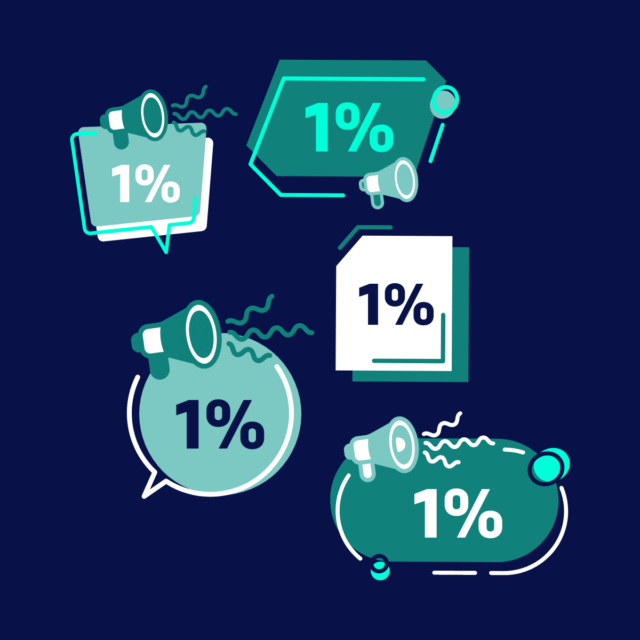With the federal budget just around the corner, there is plenty of talk about Canada’s response to the pandemic and “building back better”.
How do we want to Government to guide our country through this troubled time?
Fortunately, there is an answer that protects Canadians, and restarts a global economic recovery.
The federal government’s primary job is to protect Canadians, which is why spending 99% of Canada’s emergency COVID response and recovery funding at home makes sense; we think the public will agree. That means we can commit to investing just 1% in new international assistance to advance the global response and recovery. It will ensure that the most vulnerable people in the world also have hope.
Just 1% would put Canada in a leadership position within the G7. It would be critical for restarting the global economy, trade, and providing a robust response to the climate crisis. It would be smart, too. Every dollar invested in getting vaccines to the poorest communities will yield a return of over $5 in economic benefits to the Canadian economy.
And as long as the pandemic rages anywhere in the world, more lives will be lost, new variants will emerge, we will not be truly safe, and our economic recovery will falter. If we want to get back to “normal” it means we have to end this pandemic everywhere, not just in Canada.
In addition, the pandemic has put decades of progress in the fight against extreme poverty and other epidemics like HIV at risk. This will require investment to stabilize health systems and other social developments programs that fight preventable disease and poverty. We must not give up now.
Just 1% is enough to solidify Canada as a champion of equality, fairness, and justice, while positioning us at the core of a global recovery effort that cannot be tackled by any one nation alone.
Let’s invest just 1% in the global pandemic response and recovery plan. It will make a world of difference.
Send a tweet ahead of the federal budget to support this message
Want to know more? Keep reading below!
Canada’s Current International Assistance Level
While Canada has made a number of meaningful international commitments in recent years, our overall level of international assistance as a proportion of our national wealth has stagnated, reaching a near all-time low of 0.27% of GNI — well below the OECD rich-country average of 0.38%. Canada’s previous high was 0.34% reached in 2010 under the previous Conservative government.
With the onset of the COVID-19 pandemic in 2020, Canada not only maintained its pre-pandemic IAE but also committed around $1.2 billion in new and additional funding for the global COVID-19 response. This included funding for the Access to COVID-19 Tools (ACT) Accelerator — the global partnership working to develop and equitably distribute COVID-19 vaccines, tests and treatments — and for addressing the development and humanitarian impacts of the pandemic. We estimate these investments may bring Canada’s aid level in 2020 to 0.34% (factoring in the economic recession).
The Urgent Investment We Need
Despite these positive steps, the pandemic still presents immense challenges — from the immediate need to ensure universal global access to COVID-19 vaccines to the mass disruption of health, food and education systems, and the cascading effects of the global economic crisis on issues such as sovereign debt.
Increased international assistance is therefore crucial for Canada to be at the centre of global COVID response and recovery efforts, and also if we are to live up to our aspirations of being a world leader on addressing the climate crisis. But the government’s 2020 aid commitments are not permanent, and unless policy action is taken through this budget to baseline and build on them, our aid level will tumble back to a historic low when global needs are at historic highs.
Our proposed increase to the IAE, and the trajectory of sustained aid increases on which it would set Canada, could help achieve three goals.
Goal 1: End COVID Everywhere
Ending the COVID-19 pandemic everywhere is vital to restoring global health and economic security. With the virus and its variants spreading now to over 100 million people, taking over 2 million lives, and causing monthly global economic losses of an estimated USD $500 billion, we simply have no choice but to take extraordinary action.
The only way to end COVID (and its effects) everywhere is by unlocking global equitable access to vaccines, tests and treatment. Canada has given $973 million to the ACT Accelerator and has been a true champion of the initiative, essentially reaching its fair share of the total USD $38 billion global need this year. But we know that more funding will be needed as the COVID-19 crisis is unlikely to be resolved in the developing world in 2021. We therefore need to increase the IAE so that we are ready to contribute further, including on pandemic preparedness.
These investments will not only help lower-income countries; they will also help Canada as an export-driven economy that relies on international trading relationships and supply chains. A study conducted by Eurasia Group found that for every dollar Canada invests in global COVID-19 vaccine access, it stands to get back over $5.60 in economic benefits.
Canada has given $973 million to the ACT Accelerator and has been a true champion of the initiative, essentially reaching its fair share of the total USD $38 billion global need this year
Goal 2: Renew Action Against the Climate Crisis
This year, Canada will be called upon to meet its global climate commitments ahead of the COP 26 conference. This includes renewing and increasing its contribution to international climate finance. To reach its fair share of the annual USD $100 billion need as articulated in the Paris Agreement, Canada should be investing $1.8 billion annually over and above existing international assistance by 2025-26 to help developing countries reduce their emissions and adapt to a changing climate.
Canada cannot meet its global climate commitments without increasing international assistance.
This will require a significantly increased IAE, and the 1% ask could cover that commitment for the first two years. It also means investing in agriculture, food security, nutrition, energy and better water and sanitation, as all are essential to better equip people around the world to face the threat of a changing climate.
Goal 3: Help Restore the World’s Promise of Ending Extreme Poverty
The World Bank estimates that the collateral impacts of COVID-19 will push up to 163 million people into extreme poverty — the first rise in global poverty in decades. Twice as many people have faced acute hunger, an estimated 1.2 billion learners have had their education disrupted, and at least 80 million children missed their routine vaccinations in 2020, risking other disease outbreaks.
Before the pandemic, poverty rates for women were expected to decrease by 2.7% between 2019-2021. Now, the rate will increase by 9.1%. Canada’s signature Feminist International Assistance Policy is directly threatened by COVID-19.
These and other tragic setbacks have put us off track towards the UN Global Goals and could erase decades of Canadian investments supporting the most vulnerable around the world — an unthinkable outcome. A comparatively small investment now in humanitarian aid, food security, nutrition, education, strengthening health systems and sustainable economic growth could empower millions and maintain decades of Canadian leadership on these issues, while we continue to tackle COVID-19.
What do we mean by 1%?
As of the 2020 Fiscal Update, the federal government had spent $490 billion on domestic COVID-19 response. The government has also stated an intention to invest up to $100 billion more over 3 years to stimulate the country’s economic recovery, for a total of at least $590 billion in terms of response and recovery in Canada.
One percent is $5.9 billion, which we are calling for in additional international assistance from 2020-21 to 2022-23. Representing just 1% of our total domestic COVID spending, it would be a comparatively small investment to contribute to help end the pandemic everywhere, mitigating climate change and its effects, and help restore the world’s promise of ending extreme poverty.
The first step of this increase has already been committed by the government in 2020, who in an exemplary show of global leadership added an estimated $1.2 billion in additional aid spending for the global pandemic response while maintaining all pre-existing aid funding. However, that additional funding was only temporary so it should be integrated into an expansion of the IAE and built upon.
If Canada invests 1% of its domestic COVID response and recovery spending on new and additional ODA, we expect that in Budget 2021-22, the IAE would be $7.8 billion and in 2022-2023 it would increase to $8.7 billion. With this, Canada would be spending the average of what other rich countries invested in ODA as a share of GNI pre-pandemic (0.38%) and start on a path towards realizing the sustained annual increases Canada must commit to over the long term.



